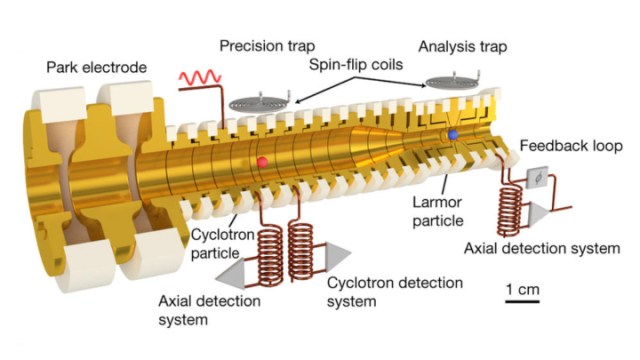Ask Ethan: How Sure Are We That The Universe Is 13.8 Billion Years Old?
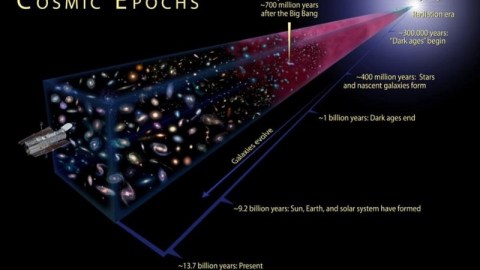
Very sure. Here’s how we know.
You’ve no doubt heard that the Universe itself has been around for 13.8 billion years since the Big Bang, and that scientists are extremely confident of that figure. In fact, the uncertainty on that figure is under 100 million years: less than 1% of the estimated age. But science has been wrong in the past. Could it be wrong again, about this? That’s the question of John Deer, who asks:
Lord Kelvin estimated the age of the Sun between 20 and 40 million years because his model didn’t (couldn’t) include quantum mechanics and relativity. How probable is it we’re doing a similar mistake when looking at the universe at large?
Let’s take a look at the historical problem, and then jump to the modern-day situation to understand more.

Back at the end of the 19th century, there was a huge controversy over the age of the Universe. Charles Darwin, looking at the evidence from biology and geology, concluded that the Earth itself must be at least hundreds of millions, if not billions of years old. But Lord Kelvin, looking at the stars and how they worked, concluded that the Sun itself needed to be far younger. The only reactions he knew of were chemical reactions, such as combustion, and gravitational contraction. The latter turns out to be how white dwarf stars get their energy, but to put out as much energy as the Sun would imply a lifetime of tens of millions of years only. The two pictures didn’t add up.

Of course, this was resolved decades later, with the discovery of nuclear reactions, and the application of Einstein’s E = mc² to the hydrogen fusion that occurs in the Sun. When the calculations were fully worked out, we realized that the Sun’s lifetime would be something more like 10–12 billion years, and that we were about 4.5 billion years into our Solar System’s existence. The ages of the Sun (from astronomy), the Earth (from geology), and life (from biology) all lined up in a consistent, coherent picture.
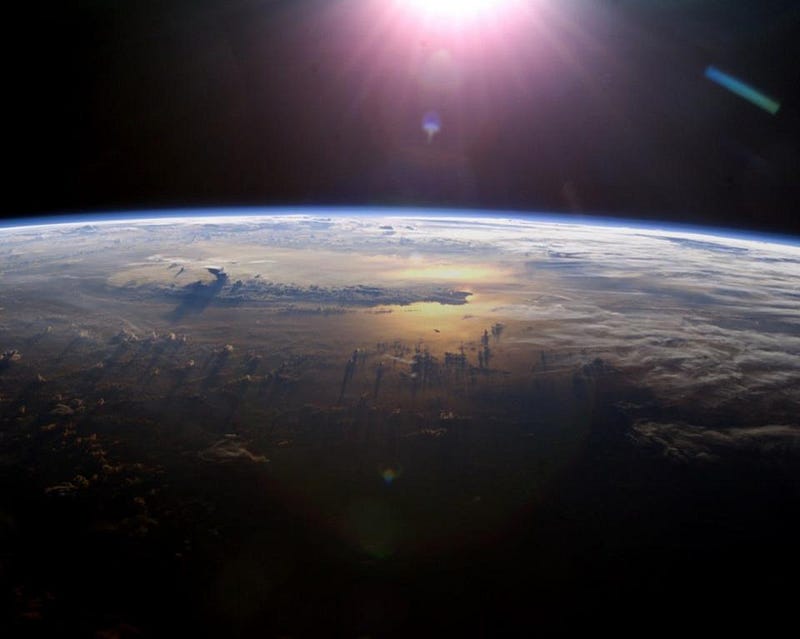
We have two ways to calculate the age of the Universe today: to look at the ages of the individual stars and galaxies within it, and to look at the physics of the expanding Universe. The stars themselves are the less precise metric, as we can only view them at one instant in time, and then extrapolate stellar evolution backwards. This is useful when we have large populations of stars, like globular clusters, but is more difficult for individual stars. The method is simple: when large populations of stars are born together, they come in all different sizes and colors, from hot, massive, and blue, to cool, small, and red. As time goes on, the more massive stars burn through their fuel the fastest, and so they begin to evolve and, later, die.
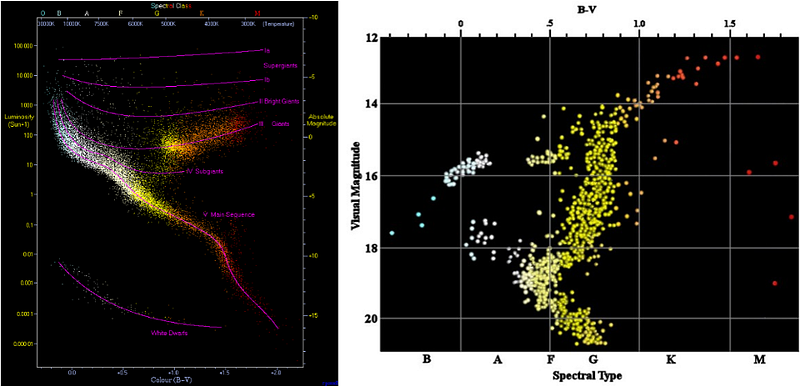
If we look at the survivors, therefore, we can date how old a population of stars is. Many globular clusters have ages in excess of 12 billion years, with some even exceeding 13 billion years. With advances in both observational techniques and capabilities, we’ve measured not only the carbon, oxygen, or iron content of individual stars, but by using the radioactive decay abundances of uranium and thorium, in conjunction with the elements created in the Universe’s first supernovae, we can date their ages directly.
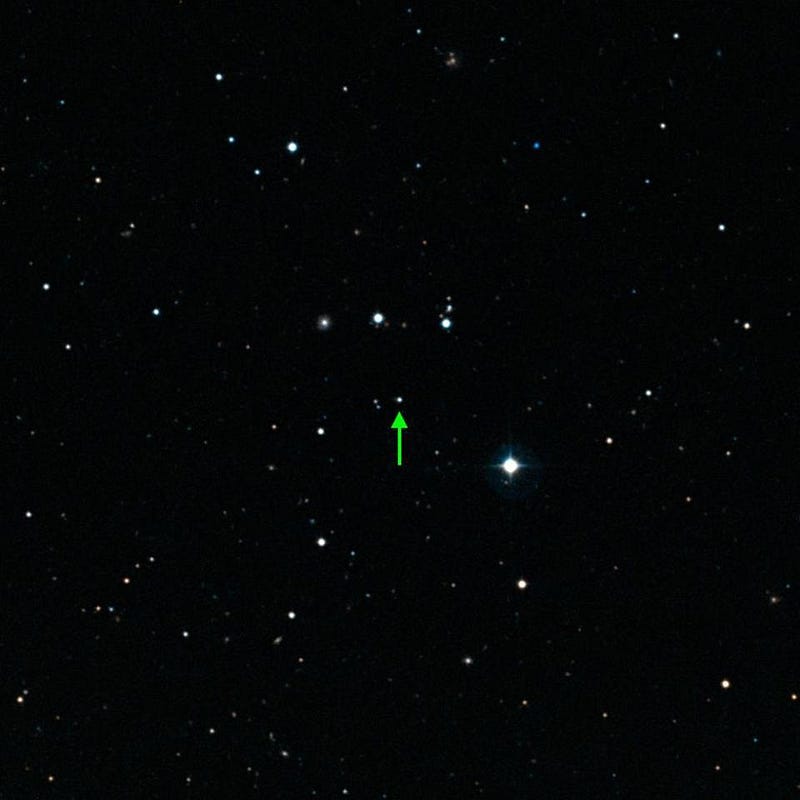
The star HE 1523–0901, which is about 80% of the Sun’s mass, contains only 0.1% of the Sun’s iron, and is measured to be 13.2 billion years old from its radioactive element abundances. In 2015, a set of nine stars near the Milky Way’s center were dated to have formed 13.5 billion years ago: just 300,000,000 years after the Big Bang, and before the initial formation of the Milky Way, with one of them having has less than 0.001% of the Sun’s iron: the most pristine star ever found. And controversially, there’s the Methuselah star, which comes in at a surprising 14.46 billion years, albeit with a large uncertainty of around 800 million years.
But there’s a better, more precise way to measure the age of the Universe: through its cosmic expansion.
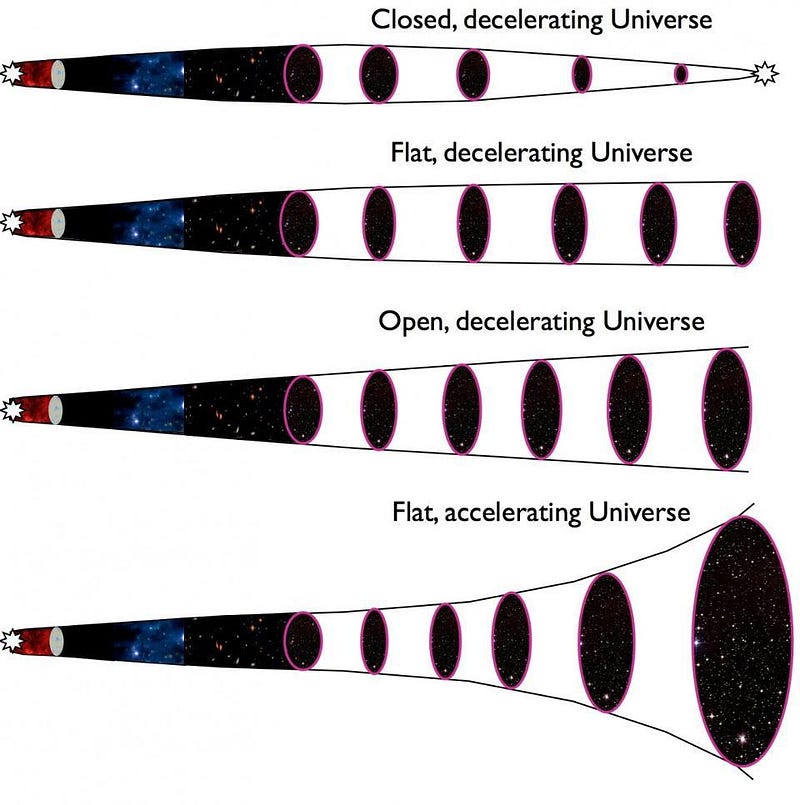
By measuring what’s in the Universe today, how distant objects appear to move, and how the light from them behaves nearby, at intermediate distances, and for the greatest distances observable, we can reconstruct the expansion history of the Universe. We now know our Universe consists of approximately 68% dark energy, 27% dark matter, 4.9% normal matter, 0.1% neutrinos, and 0.01% radiation, today. We also know how these components evolve in time, and that the Universe obeys the laws of General Relativity. Combine those pieces of information, and a single, compelling picture of our cosmic origins emerge.
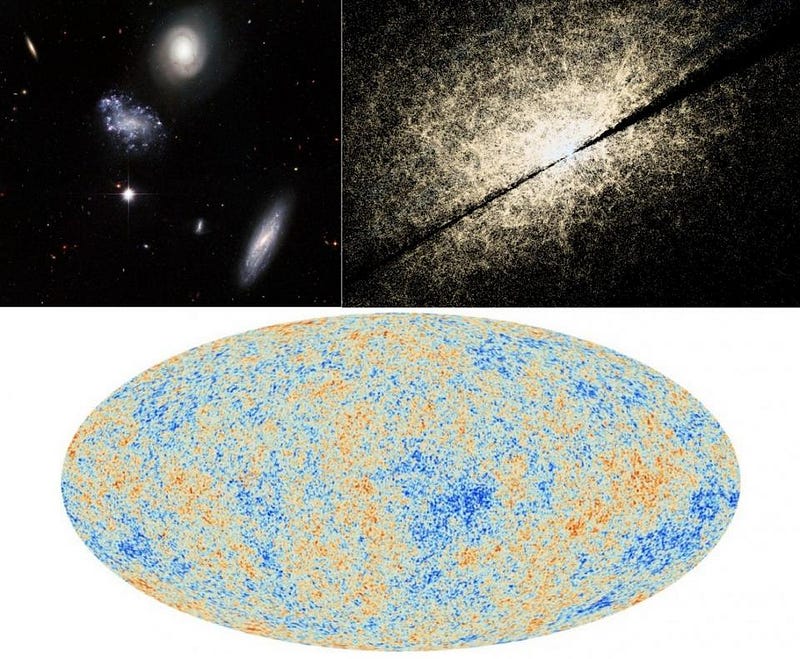
For a few seconds, the Universe was an ionized mess of particles and antiparticles, which eventually cooled and allowed the formation of leftover atomic nuclei after a few minutes. After 380,000 years, the first stable, neutral atoms formed. Over tens to hundreds of millions of years, gravitational attraction brought this matter together into stars and then galaxies. And over billions of years further, galaxies merged and grew to give us the Universe we see today. With the data collected from a variety of sources, including the cosmic microwave background, the large-scale clustering of galaxies, distant supernovae, and baryon acoustic oscillations, we arrive at a single, compelling picture: a Universe that’s 13.8 billion years old today.
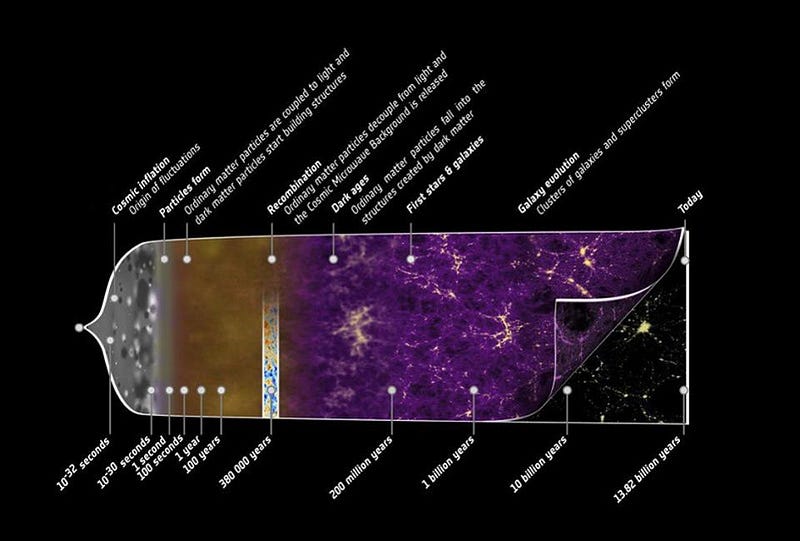
There are some uncertainties that go beyond what gets reported by, say, Wikipedia, which quotes our Universe as being 13.799 ± 0.021 billion years old. That 21 million year uncertainty could easily get five-to-ten times as large if there’s a systematic mistake that’s been made somewhere. There’s presently a controversy over the expansion rate (the Hubble constant) today, with the CMB indicating it’s closer to 67 km/s/Mpc, while stars and supernovae point towards a figure more like 74 km/s/Mpc. There are uncertainties in the dark matter/dark energy mix, with some measurements favoring a ratio as low as 1:2, while others favor 1:3 or anything in between. Depending on the resolution to these puzzles, it’s conceivable that the Universe could be as young as 13.6 billion years, or as old as 14 billion.

What’s unlikely, however, is that there’s going to be a major revision of this 13.8 billion year figure. Even if there is more fundamental physics than the forces, particles, and interactions that we know of, they are unlikely to change the physics of how stars work, how gravity works over time, how the Universe expands, or how radiation/matter/dark energy make up our Universe. These things are well-measured, well-constrained, and as well-understood as one could reasonably ask for. Even if dark energy evolves, fundamental constants like G or c or h change over time, or the Standard Model particles can be further broken up, the age of the Universe won’t change by very much from the Big Bang until the present.
Revisions and surprises may certainly be coming, but when it comes to the age of the Universe, after millennia of wondering, humanity finally has an answer it can trust.
Send in your Ask Ethan questions to startswithabang at gmail dot com!
Ethan Siegel is the author of Beyond the Galaxy and Treknology. You can pre-order his third book, currently in development: the Encyclopaedia Cosmologica.




